Horseback Riding in France - Giving the Mont Back to the Sea - Part 5
Learn about the planned pedestrian bridge and future of horseback riding to Mont St. Michel
by Caroline Maffry
Today the French government is in the process of removing the land bridge that connects Mont St. Michel to the main land, freeing the Mont of the stranglehold of the surrounding salt marshes. The project in place would when finished, give Mont St. Michel “back to the sea”.
Their site states that “when the tide comes in, the Mont will then be linked to the mainland via a raised passage for visitors to cross over safely. For a few hours each year, the Mont will be completely cut off by the very big flood tides. This will fully restore the symbolism of Mont St Michel.”
By removing this land bridge and replacing it with a bridge or jetty that the water can naturally flow under, the combined forces of the sea and the River Couesnon would then also allow the landscape to fully recover its marine dimension.

There are mixed feelings among the locals about this project already under way. One main concern is how removing this jetty will affect the bay. For the most part, giving Mont St. Michel “back to the sea” or restoring the maritime character of the mont is a good thing, allowing the bay to return to its natural ways without any man made obstructions.
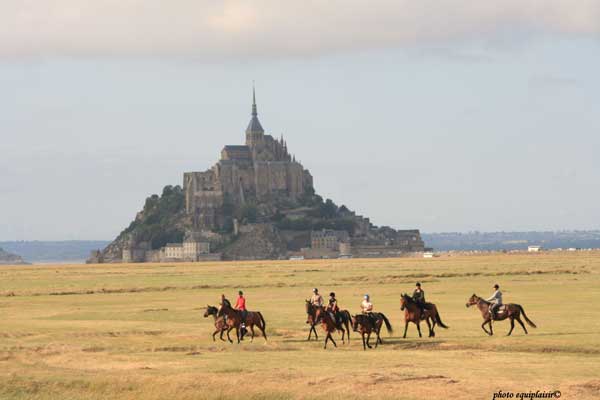
The projects official website states that “the project will allow the tidal and river currents to swirl around the Mont as before, each day redrawing a moving environment of sands and water. This water will flow either side of a guiding and dividing dyke down two separate channels in which the Couesnon will be free to meander. An impact survey highlighted the beneficial effects it would have on the Bay environment.”
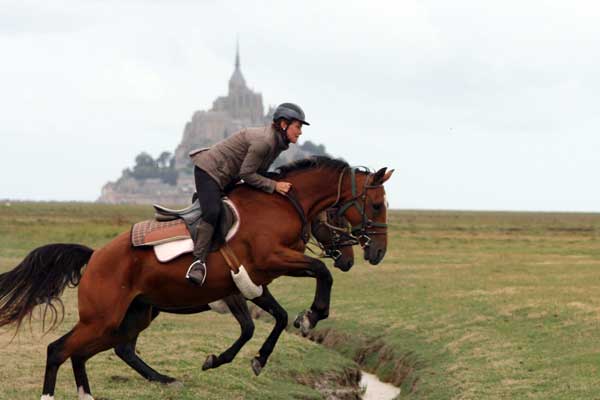
It goes on to say that “Mont Saint-Michel was previously connected to the mainland via a thin natural land bridge, which before modernization was covered at high tide and revealed at low tide. This connection has been compromised by several developments. Over the centuries, the coastal flats have been polderised to create pasture. Thus the distance between the shore and the south coast of Mont-Saint-Michel has decreased. The Couesnon River has been canalised, reducing the flow of water and thereby encouraging a silting-up of the bay. In 1879, the land bridge was fortified into a true causeway. This prevented the tide from scouring the silt around the mount. On 16 June 2006, the French prime minister and regional authorities announced a €164 million project to build a hydraulic dam using the waters of the river Couesnon and of tides to help remove the accumulated silt deposited by the rising tides, and to make Mont-Saint-Michel an island again. The construction of the dam began in 2009 and is now complete. The project also included the destruction of the causeway that had been built on top of the small land bridge and enlarged to join the island to the continent, and was used also as a parking lot for visitors. It will be replaced by an elevated light bridge, under which the waters will flow more freely, and that will improve the efficiency of the now operational dam, and the construction of another parking lot on the mainland. Visitors will use small shuttles to cross the future bridge which will still be open to pedestrians and unmotorized cycles.”
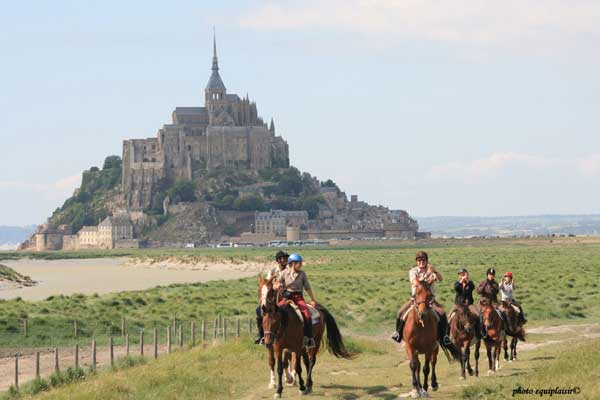
Currently, the departures by Cheval-Plaisir with their horses and guests are timed exactly so that reaching the northern crossing-point is precisely at the lowest point of the tide.
Then the riders and horses with Cheval-Plaisir start the 6 km or nearly 4 mile crossing towards Mont St. Michel. To allow their guests the chance to dismount and visit Mont St. Michel, the horses are hitched at the back of the mont and wait patiently as their riders break for a meal.
Once the new restrictions are in place, the horses will no longer be able to use its new pedestrian crossing at high tide to reach the main land. By this point, there will be no other way to exit the mont as the tide has returned and the bay is now surrounding it.
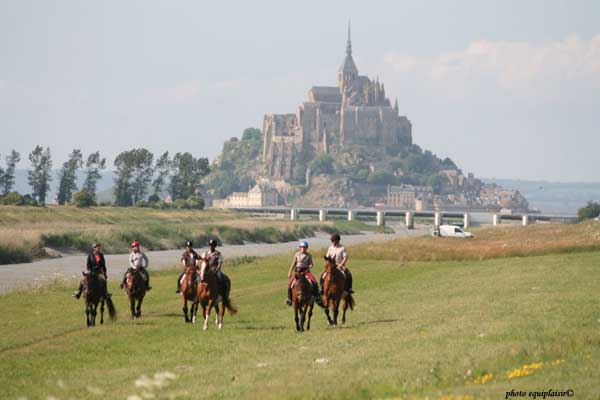
Once the sole method of transportation, the horse has now become a forgotten means of travel in getting from place to place. Discussions are still taking place and a final decision has yet to be reached about the horses using the new pedestrian bridge. As the horse is no longer recognized as an authorized form of transportation, the Jovins are not optimistic about a positive outcome. Hopefully there will be a compromising solution to resolve this.
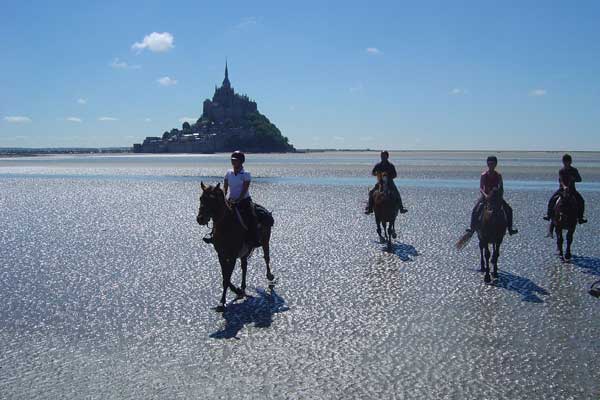
Photos courtesy of Cheval-Plaisir. For more information on Cheval-Plaisir, visit www.cheval-plaisir.com or contact the Jouvins at info@cheval-plaisir.com, tel number: 02 33 60 52 67
Learn more about travel to Normandy
Miss a part? Start from the begining:




